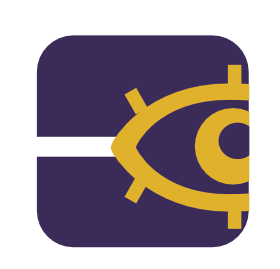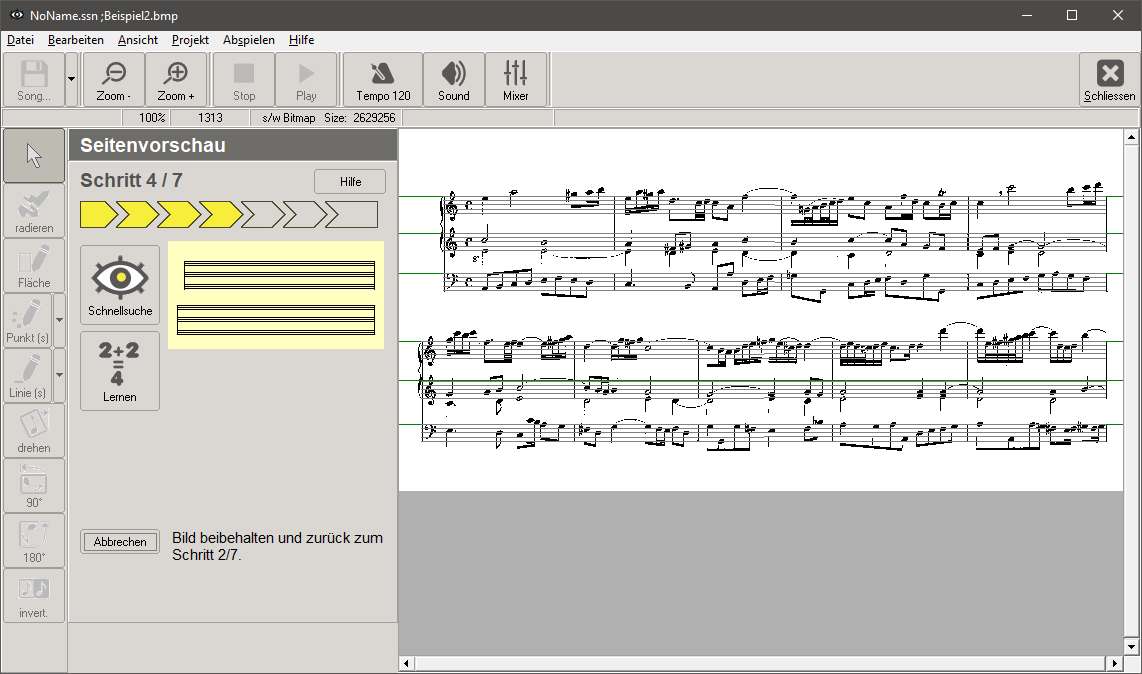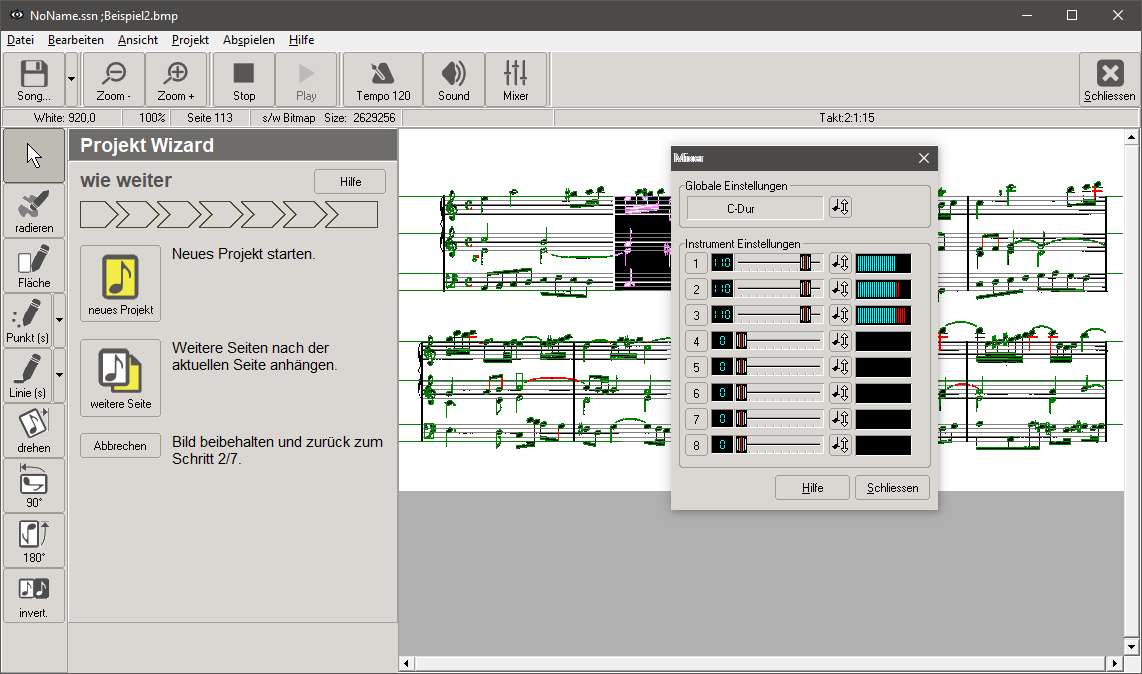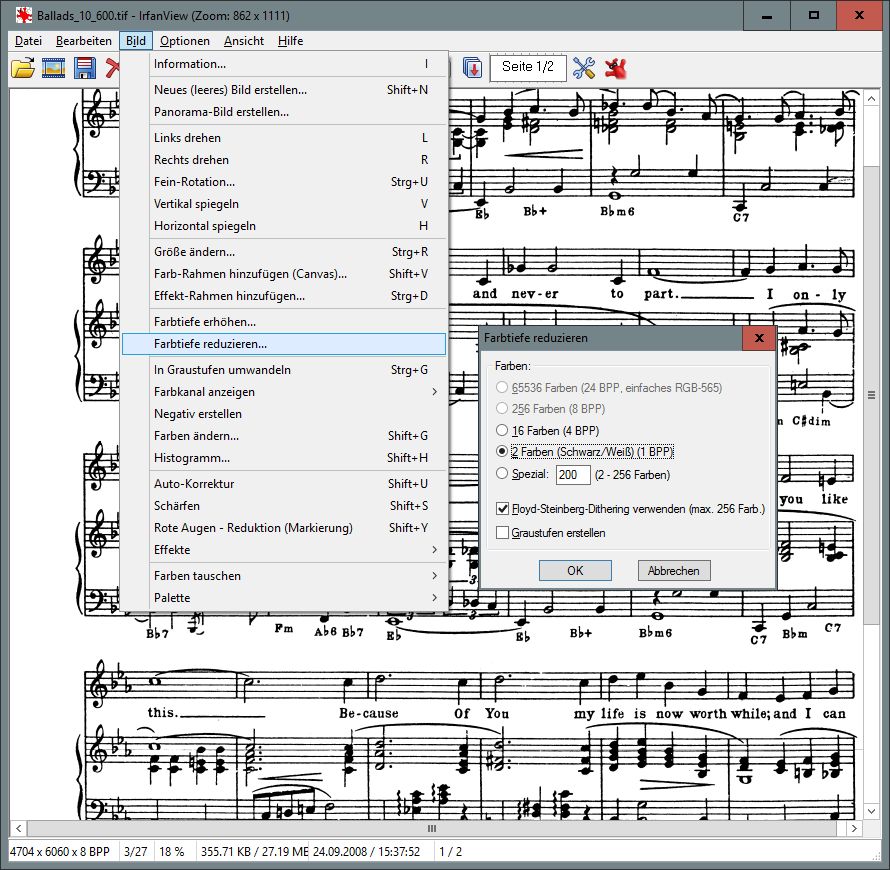
MIDI-Connections SCAN 2.5
MIDI Connections Scan is notation-recognition software that analyses the
scanned or loaded music notation and converts it into MIDI data. The MIDI
data can be played on the computer or stored as standard MIDI
(MID), MIDI Connections (TSN) or MusicXML files and loaded and
processed in a notation programme. To open and edit the MID or TSN
files, you can also use the small version of our
MIDI-Connections Free
sequencer notation series.
Find the demo version of the scan programme
here.
The images on this page can be enlarged with a mouse click.
Price: product2
Scanning the sheet music
You can scan the sheet music using a standard scanner in black/white mode and with a resolution of 600dpi. Afterwards, you have the option to start the recognition process, or to edit the sheet music first. Perhaps the template was laid upside down into the scanner, or the template is printed in a horizontal format. MC-Scan provides various functions for correction of the sheet music template. 90-180 degree rotation, inversion, delete unneeded areas or erase areas.
The analysis method
If the template is ready, the analysis can be started. The analysis method of MIDI-Connections Scan is based on a note symbol database. In quick search, MC-Scan compares the symbols found with the symbols in the note symbol database. Different algorithms help to weigh symbol probabilities. It is checked at the beginning of the analysis, whether the key, key type and time signature were correctly recognized. This check is repeated once the time signature or key signature is found.
An evaluation appears at the end of the quick search, which shows the number of
recognized and unknown symbols. If necessary, time corrections are performed.
Time corrections are necessary in the case of confusing symbol groups or unrecognised
symbols.
The sheet music now shows a green-red colour. Green are the recognized symbols;
and red the unrecognised. Using the red symbols, you can quickly see if the
unrecognised symbols are relevant to the piece. Often, it is small smudges on
the template or symbols of importance that are processed in the next step.
The learning process
The analysis process works with a symbol database, which you can extend in the learning process itself. You can teach the programme to read individual notes. The unrecognised symbols will be 'added' to the programme. The symbols you have stored are collected in a user database and are already applied to the next similar symbol. From time to time, the programme recognises the "difficult" symbols better.
An assistant helps you to identify, determine and store unrecognised symbols or
their parts into the user database. Several such databases can be integrated into
the programme.
The scan result can be played immediately and can be acoustically matched with
the integrated 8-channel mixer. The entire piece or even individual systems can
be transposed directly.
Saving the pieces
To further edit scanned sheet music, the export function is available as a standard MIDI file (SMF / MID), MIDI Connections file (TSN) or MusicXML file. This allows your pieces to be read and edited in almost all notation programmes. To open and edit the MID or TSN files, you can also use the small version of our MIDI Connections Free sequencer notation series.
Loading already scanned sheet music
MC-Scan reads and saves black/white bitmaps and TIF-Huffman files. Ideally, the templates should be scanned with a resolution of 600dpi. If the templates are saved as JPG data, converting to the TIF-Huffman format helps to create small, loss-free compressed images. The ideal tool for the conversion is the IrfanView programme. A loaded image can be converted to a black/white image with the "Reduce image/colour depth" function and then saved as a TIF (Tagged Image File) with the TIF-Huffman compression.
Functions
- Analyse from a single stave up to a conductors score containing four individual instrument parts.
- Capable of learning by analysis.
- Integration of unique symbol databases
- Playing notes of the analysed music.
- Storing songs as MIDI (.mid) data or Tape-Song.
- Graphic functions include turning, drawing points and lines, deleting, etc.
- Resolutions of 400, 600 or 1200 dpi.
System Requirements:
- operating system XP, Vista, Win7, Win8, Win10 or Win11
- installed MIDI-playback







